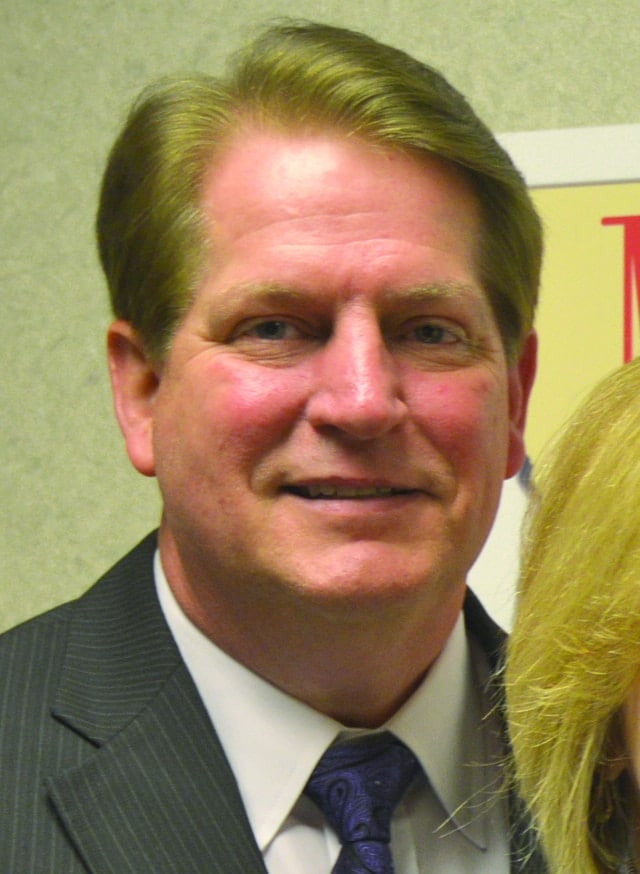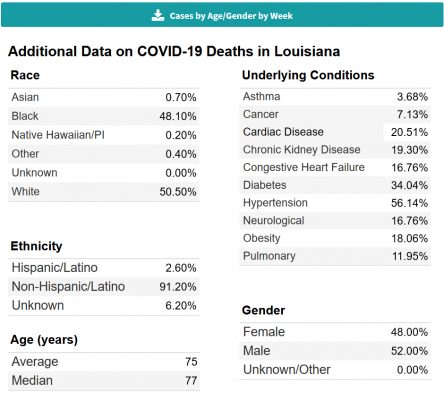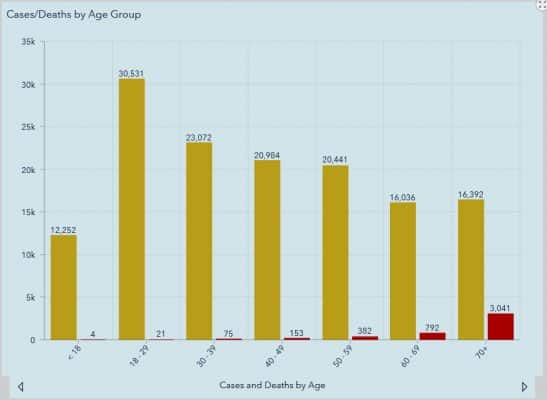By Will Hall, Baptist Message executive editor
ALEXANDRIA, La. (LBM) – COVID-19 continues to kill people in our state and across our nation even though government officials know what is causing the complications leading to hospitalizations, ventilations and deaths and why COVID-19 affects a very specific vulnerable population in such dramatic ways.
As of this writing, there have been about 4,500 deaths from the coronavirus in our state, with 41 percent of these lost lives being suffered by nursing home residents, according to Louisiana Department of Health data. Indeed, more than 3,000 deaths (67 percent) have stricken those 70 years old or more.
Nationally, the Centers for Disease Control and Prevention has published information showing that half of the 176,000 COVID-19 deaths, so far, have taken the lives of those 78 years old or more.
But what these victims share in common is not age.
Instead, they have a condition also shared with younger victims of hospitalizations, ventilations and deaths – an increased volume of angiotensin converting enzyme 2, a protein that regulates blood pressure. It is a factor in hypertension, diabetes, cardiac disease, chronic kidney disease and obesity, all of which are comorbid conditions among those who have been severely impacted by COVID-19.
Indeed, research appears to indicate that without such an underlying condition (CDC maintains a thorough list for adults and children) COVID-19 does not affect a person any worse than the flu.
Importantly, the science suggests the right policy is not to shut down a whole economy, but to focus laser-like only on those vulnerable to COVID-19 complications.
Instead of adding a trillion dollars of debt in pandemic relief payments (and perhaps another trillion dollars in the near future), a fraction of this money could have been spent to completely quarantine nursing homes from the outside world (keeping staff on campus and testing them to ensure they don’t carry COVID-19 among residents), thus eliminating nearly half of the hospitalizations, ventilations and deaths from this virus.
Additionally, some of the funds could have been spent to identify those in the general population who have underlying medical conditions associated with complications from COVID-19 (doctors know what patients are affected by such ailments) — and to pay to isolate them from the world until a vaccine or treatment are available to immunize them from this disease.
Meanwhile, the data seems to indicate that even if the rest of the population becomes infected, there would be no greater impact than folks, young or old, having experienced a nasty cold.
— We should isolate workers who are vulnerable to complications from COVID-19 and offer them financial relief until we receive the “all clear” signal from the science on the matter.
— We can send students back to school and their normal routines — except for students, teachers and staff who are susceptible to severe effects. Let these individuals learn — in the near term — using online classes, and contribute in other ways than through in-person attendance. Or, find other solutions that keep these individuals away from the rest of the population until it is safe to return.
Government officials should stop holding the whole state and the entire nation hostage to this disease, when a “surgical” approach (e.g. isolating only the vulnerable) is what we need.






